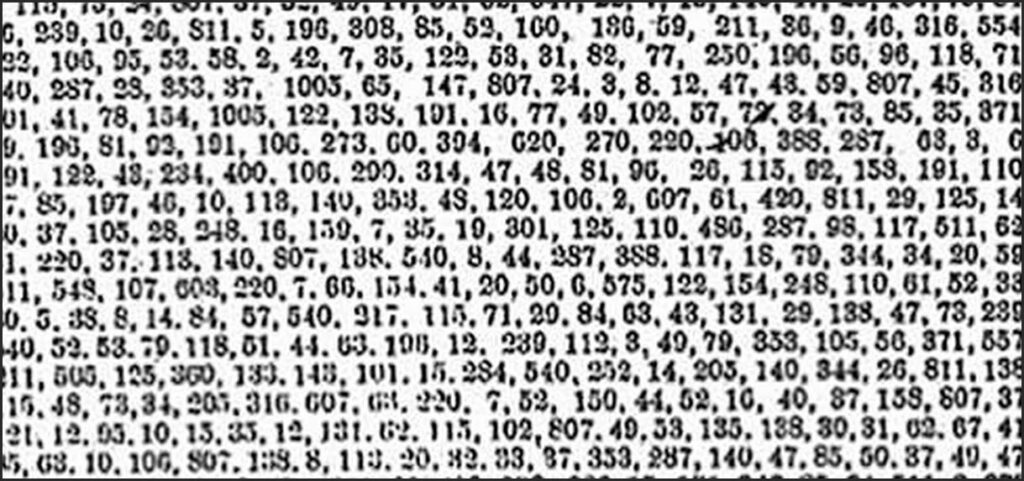
(Scroll Down for Declassified Documents)
The following is a great write up by Wikipedia of what “The Beale Ciphers” or “The Beale Papers” really are. I was surprised to learn of an extensive collection of documents regarding these papers.
The Beale ciphers, also referred to as the Beale Papers, are a set of three ciphertexts, one of which allegedly states the location of a buried treasure of gold, silver and jewels estimated to be worth over $63 million USD as of September 2011. Comprising three ciphertexts, the first (as yet unsolved) text describes the location, the second (solved) ciphertext the content of the treasure, and the third (unsolved) lists the names of the treasure’s owners and their next of kin.
The story of the three ciphertexts originates from an 1885 pamphlet detailing treasure being buried by a man named Thomas J. Beale in a secret location in Bedford County, Virginia, in the 1820s. Beale entrusted a box containing the encrypted messages to a local innkeeper named Robert Morriss and then disappeared, never to be seen again. According to the story, the innkeeper opened the box 23 years later, and then decades after that gave the three encrypted ciphertexts to a friend before he died. The friend then spent the next twenty years of his life trying to decode the messages, and was able to solve only one of them which gave details of the treasure buried and the general location of the treasure. The unnamed friend then published all three ciphertexts in a pamphlet which was advertised for sale in the 1880s.

Since the publication of the pamphlet, a number of attempts have been made to decode the two remaining ciphertexts and to locate the treasure, but all efforts have resulted in failure.
There are many arguments that the entire story is a hoax, including a 1980 article “A Dissenting Opinion” by cryptographer Jim Gillogly, and a 1982 scholarly analysis of the Papers and their related story by Joe Nickell, using historical records that cast doubt on the existence of Thomas J. Beale. Nickell also presents linguistic evidence demonstrating that the documents could not have been written at the time alleged (words such as “stampeding”, for instance, are of later vintage). His analysis of the writing style showed that Beale was almost certainly James B. Ward, whose 1885 pamphlet brought the Beale Papers to light. Nickell argues that the tale is thus a work of fiction; specifically, a “secret vault” allegory of the Freemasons. James B. Ward was, in fact, a Mason himself.
The National Security Agency Declassified Records
The following records were released to me, in connection with my FOIA Request 75804 with the National Security Agency (NSA). There are more records being reviewed for declassification, and will be added here once I receive them (or they are posted online by the NSA):

[205 Pages]
- A Cipher’s the Key to the Treasure in Them Thar Hills
- A Treasure Buried Deep in Bedford County
- Beale, The Beale Papers
- Beale Treasure – Fact or Fiction
- Has the Beale Treasure Code Been Solved?
- Historical and Analytical Studies in Relation to the Beale Cypers, dated 7 March 1970
- Historical and Analytical Studies in Relation to the Beale Cypers, dated 15 April 1972
- Membership Application
- More Information on Unsolved Cipher
- Other Miscellany
- Research Library
- Secret Code to Virginia’s $2 Million Blue Ridge Bonanza
- Signature Simulation and Certain Cryptographic Codes
- Solve the Cipher, Find a Treasure
- The Beale Ciphers
- The Beale Papers
- Treasure Beyond Your Wildest Dreams

